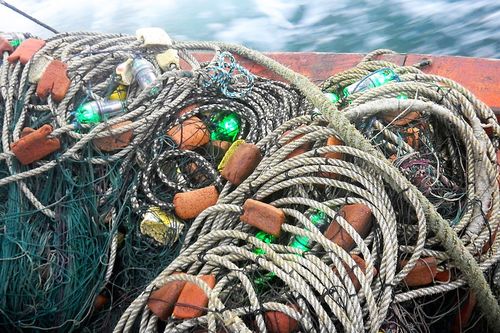LED Net Technology Trialed in Peru
A new mitigation tool is under trial in Peru in an effort to minimise seabird strike on nets.

Photo credit: ProDelphinus
The study examines how illuminating fishing nets with low-cost and energy-efficient LED lights may help to reduce seabird bycatch in commercial fisheries.
The research paper was published in the Royal Society Open Science journal this month.
Led by Dr Jeffrey Mangel, the research was conducted in Sechura Bay and compared 114 pairs of gillnets, each around 500-metres in length. In each pair, one net was illuminated with LEDS at 10 metre intervals along the gillnet floatline and the other was a non-illuminated control net. The nets were left in situ from dusk until dawn when the fishermen collected their catch.
So far, results have been encouraging. Control nets (non-illuminated) caught 39 guanay cormorants – native diving birds – whereas the illuminated nets caught only six. This equated to an 85 percent reduction in bycatch when the LED technology was fitted.
A previous study, that also used LED lighting, found sea turtle bycatch decreased by 64 percent without impacting on the number of fish caught by commercial vessels.
Researchers believe the lights could offer an economical, consistent and durable way of reducing bycatch and marine mammal deaths.
“We are very encouraged by the results from this study,” said Mangel.
“It shows us that we may be able to find cost-effective ways to reduce bycatch of multiple taxa of protected species, and do so while still making it possible for fishers to earn a livelihood.”
FINZ’s Programmes Manager Oliver Wilson said it was interesting work.
“The development of new mitigation methods is something of interest to New Zealand fisheries and we look forward to seeing more information as this develops.”
Read more about the study here.
